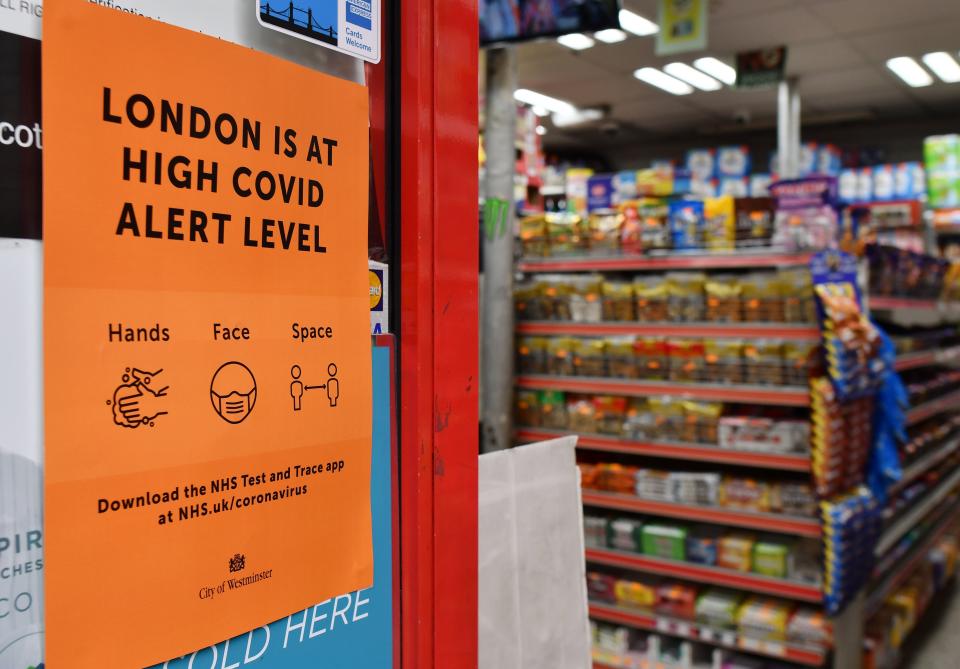Daily coronavirus deaths 'could hit 500 by end of October in England'

More than 500 people in England could be dying from coronavirus every day by the end of the month, a new study has warned.
A report by the MRC Biostatistics Unit at the University of Cambridge estimates daily deaths are “likely” to be between 230 and 515 in England by 31 October.
The study estimates 50,000 people are being infected with COVID-19 each day in England.
The report estimates the R value, which refers to the number of people a person with the virus infects, is above 1 in most regions, mirroring government estimates that it is between 1.3 to 1.5.
It also states the number of infections is growing by 7% each day, the equivalent of a doubling of infections every 10 days.

On 23 March, the day that England first went into a full lockdown, there were 67 reported COVID-19 deaths, according to official government figures.
The highest daily death figure so far is 1,116, seen on 21 April, at the peak of the pandemic, while there were 213 reported coronavirus deaths in England on 20 October.
Daily COVID-19 deaths in England started to rise again at the end of September after an increase in infections, prompting the government to introduce tiered local lockdown restrictions.
The figures come after England’s deputy chief medical officer Professor Jonathan Van-Tam said the rate of change in infections in the over-60s meant more deaths were “baked in” and that he expected death rates to “continue upwards”.
Watch: Jonathan Van-Tam says elderly must be protected at all costs
Speaking at a Downing Street press conference on Tuesday, Van-Tam said: “I really want to emphasise that it is the over-60s that really worries us most because these are the people who become severely ill with COVID-19, they are more likely to be admitted to hospital, if they are admitted to hospital they stay in hospital for longer and sadly they are more difficult to save.”
He said infections among younger people are now penetrating those older age groups.
“This means that the hospital admissions and the deaths linked to those cases are now baked in for the next two to three weeks,” he added.
Despite more regions entering the highest Tier 3 restrictions – including Greater Manchester and South Yorkshire – Van-Tam said he does not currently support a full national circuit-breaker lockdown for England like those introduced for Northern Ireland and Wales.
However, he added that the NHS cannot be “consumed by COVID” and must be able to continue with its other work.
He said: “We just can’t afford just to let our elderly die.

“And we can’t afford to allow our NHS to be completely consumed by looking after COVID, so it can’t do its other businesses as usual.
“So we’ll have to take as tough measures as are necessary to stop that.”
Watch: What is long COVID?
Coronavirus: what happened today
Click here to sign up to the latest news and information with our daily Catch-up newsletter



